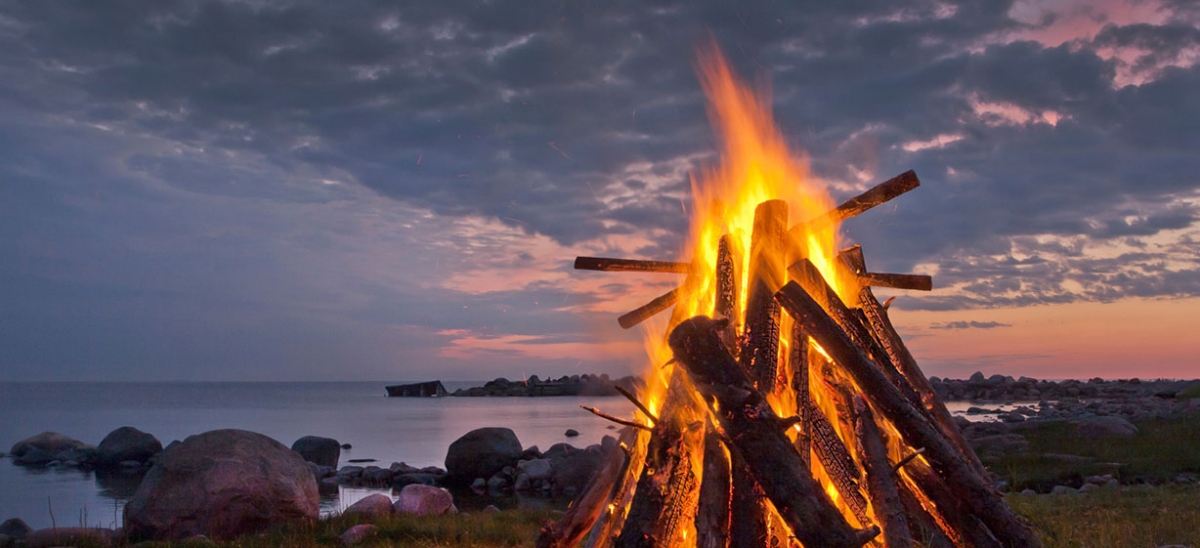Welcoming Midsummer’s Eve

At the end of may last year, my son and I drove into Groningen—the Netherlands’ northernmost city. By chance, we arrived on the first warm, sunny day they’d had after an unusually long, cold and dark winter. By early afternoon, business stopped, and everywhere, jubilant people of all ages poured into the parks and outdoor cafes to soak up the sun. It was a spontaneous holiday, the likes of which we’d never seen.
After last winter, however, I think I get it. We not only lived through extreme cold, but from November through April, it rained or snowed on 80 percent of the days, and we had a grand total of three clear days, which the National Weather Service defines as having less than 30 percent cloud coverage. Those dark months coincide with my greatest workload, so, as a good American, I worked from early ‘til late. With the arrival of Memorial Day, however, summer officially begins, and in my book, especially this year, that’s cause for celebration.
Since the Stone Age at least, people have celebrated the arrival of the summer sun and days when “the livin’ is easy.” The biggest celebrations occurred on the longest day of the year, the summer solstice, which derives from the Latin word sol (sun) and sistere (to stand still).
Historically, these celebrations on June 20 or 21 almost invariably involved bonfires, to ensure successful crops, rid the land of dragons or chase away evil spirits, which were said to roam freely on the solstice, when the sun begins its southward turn signaling shorter days ahead. Fertility was a big part of many of the festivities, with girls placing special herbs under their pillows so they’d dream of their future husband, or looking into still water where the image of their future love was said to appear. And, no surprise, revelers ate, drank and danced long into the night.
Christians changed these solstice celebrations into observan-ces of the birth of St. John the Baptist—June 24—adopting some of the pagan rituals and discouraging wilder revelries. But midsummer’s eve remains a huge event in many places, especially Scandinavia, where in Sweden and Finland it’s a national holiday. They prefer to observe it at a lakeside cottage, adorning front doors with young birches, flowers and ferns to welcome visitors. Leaping over bonfires continues, along with drinking and singing. Perhaps the least inhibited celebration occurs in Kuldiga, Latvia where revelers run naked through town at 3 a.m.
Apparently, these northerners know how to turn the negative of a long, dark winter into a party. Perhaps we could learn something from them. Currently, Pittsburgh has a few summer solstice gatherings, mainly at bars and clubs. The Carnegie Science Center offers reduced admission to anyone who brings a snowball, and they launch them into the Ohio River. Given the darkness (and grayness) of our winters, Pittsburgh almost qualifies as Scandinavian, so why not create a citywide solstice party? With the weight many of us put on last winter, I’m not suggesting we follow Kuldiga’s example, but something fun might be in order. We already have “Light-up Night” and “First Night”; why not “Summer Night?”
In the meantime, for the first time in decades I plan to note the solstice June 21 by driving to our own lakeside cottage in Michigan’s Upper Peninsula. Once as a teenager, I was there when the solstice coincided with a full moon, and a gang of us drove boats through the islands and out onto Lake Huron. On that great blue expanse, the full moon rose over the flat water an hour before the sun set on the other horizon. This won’t happen again until 2016, so this year we’ll gather for a bonfire on the beach. And when darkness finally falls after 11 p.m., it’ll be time to lie back and view the heavens.


